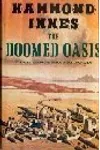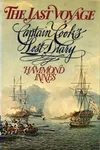Picture an English storyteller who turned ordinary men into heroes against the wildest backdrops—meet Hammond Innes! Born in 1913, this master of adventure thrillers captivated readers with tales of suspense, meticulously researched settings, and protagonists who relied on wits, not gadgets. From stormy seas to icy Arctic wastes, Innes’s novels are a thrilling ride through the 20th century’s most gripping landscapes.
The Making of Hammond Innes
Ralph Hammond Innes was born on July 15, 1913, in Horsham, Sussex, England. Educated at Cranbrook School in Kent, he left in 1931 to chase a career in journalism at the Financial News. His writing spark ignited early, and by 1937, he published his first novel, The Doppelganger, a supernatural thriller. World War II saw him serve in the Royal Artillery, rising to major, while still penning books like Attack Alarm, inspired by his time as an anti-aircraft gunner during the Battle of Britain. After the war, Innes dove into writing full-time, blending his love for travel and sailing into his work.
Hammond Innes’s Unforgettable Stories
Innes wrote over 30 novels, each a testament to his knack for vivid settings and everyman heroes thrust into extraordinary circumstances. Unlike typical thriller protagonists armed with high-tech gadgets, his characters relied on resourcefulness, making their triumphs feel raw and real. The Wreck of the Mary Deare (1956) is a standout, a gripping tale of a derelict ship and a man’s fight to uncover its secrets, later adapted into a film starring Gary Cooper. Campbell’s Kingdom (1952) follows an unlikely hero battling to save a Canadian oil inheritance, while The White South (1949) plunges readers into the Antarctic’s icy perils. The Lonely Skier (1947), set in the Dolomites, weaves a tale of Nazi gold and betrayal, showcasing Innes’s ability to merge suspense with exotic locales.
His meticulous research—often involving six months of travel followed by six months of writing—brought authenticity to every page. A passionate yachtsman, Innes infused his sea-based novels with a sailor’s intimacy, while his later works, like The Big Footprints (1977), tackled ecological themes, reflecting his growing environmental concerns. His storytelling pace slowed in the 1960s, but his output remained steady until his final novel, Delta Connection (1996).
Why Hammond Innes Matters
Hammond Innes redefined the thriller genre by proving that ordinary people could be extraordinary heroes. His focus on hostile environments—be it the Arctic, deserts, or stormy seas—set a benchmark for adventure fiction, influencing writers who followed. His novels, many adapted into films, brought global landscapes to life for readers, earning him a Commander of the Order of the British Empire (CBE) in 1978 and a Lifetime Achievement Award in 1993. Innes’s legacy endures in his ability to make readers feel the wind’s bite or the ocean’s roar, all while rooting for an underdog.
- Born: July 15, 1913, Horsham, Sussex, England
- Key Works: The Wreck of the Mary Deare, Campbell’s Kingdom, The White South, The Lonely Skier
- Awards: CBE (1978), Lifetime Achievement Award (1993)
- Died: June 10, 1998, Kersey, Suffolk, England
Snag The Wreck of the Mary Deare and dive into Hammond Innes’s thrilling world of adventure!










































